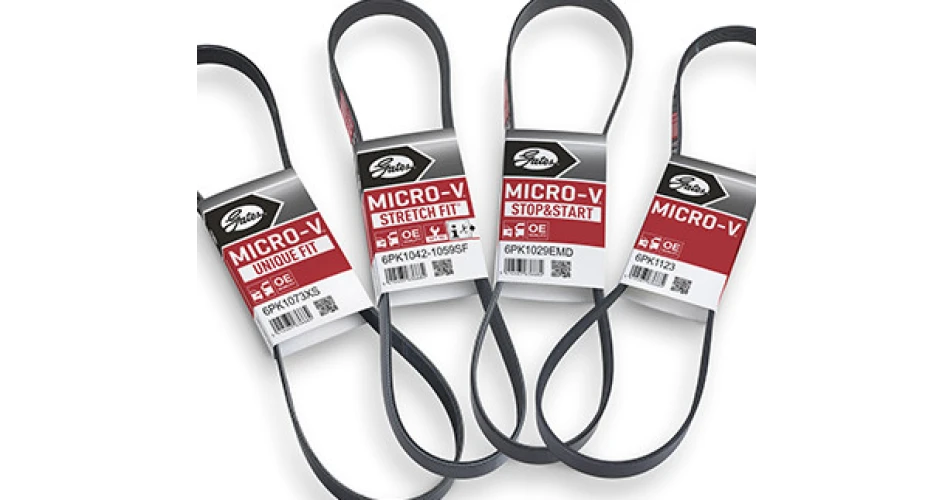Fuel-saving electromechanical drives are an important part of engine emission control solutions, but as power transmission specialist Gates explains they should not be fitted with standard accessory belts.
As an OE manufacturer, Gates works closely with vehicle manufacturers to improve fuel efficiency and control emissions. Many Peugeot and Citroen applications, for example, feature Electromechanical Drive (EMD) Systems designed by Gates. This EMD design allows starter-generator systems to use an advanced belt drive for a smooth and almost completely silent vehicle start-up.
Warm engines require less cranking power so for restarts instead of using the starter motor on some cars the crankshaft is rotated by means of the generator/alternator via the EMD system’s stop-start belt. When the crankshaft is providing power to the alternator, the right hand side of the drive belt is taut, while the left hand side is slack. When the EMD draws power directly from the alternator, the tension is on the opposite side of the drive system.
The EMD employs a specialist belt-driven two-tensioner system that can control the level of tension exerted on both sides of the drive system. This ensures that they operate smoothly in both the starting mode and in the power-generating mode.
Because greater degrees of tension and torque are needed in the EMD, these belts have a different construction from standard accessory belts and use aramid cords for strength, rather than traditional polyester cords.
The complexity of these EMDs makes fault diagnosis difficult and there is potential to confuse symptoms with causes. If fitted to a belt-driven EMD, a standard accessory belt will fail very quickly. If the belt fails, debris has been known to contaminate the timing belt drive, with disastrous consequences.
The consistency and reliability of the two-tensioner EMD system is such that there is no specified replacement interval, but at replacement, the interconnectivity of the parts must be considered. This is because the two tensioners work together as part of a single drive system
Gates Micro-V stop&start belts for EMDs are engineered for at least 600,000 starts. The company recommends that both tensioners are changed when a new EMD belt is installed and says that fitting a Gates belt kit as part of drive system overhaul is a good policy because it ensures that all parts required are correct, compatible and included in the same box and covered by Gates warranty of 2 year/60,000 miles.
